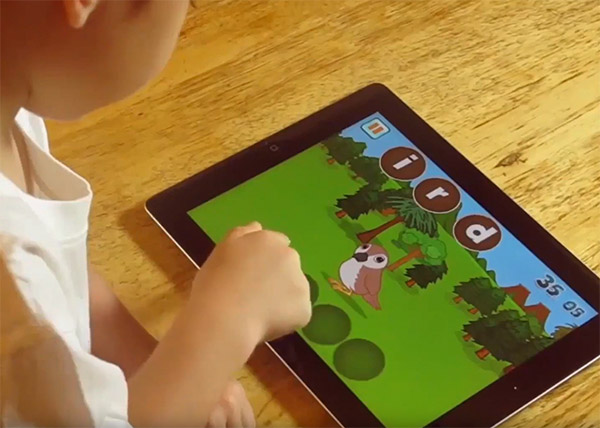Autonomy in Young Language Learners: A Self-Determination Theory Perspective
Helping students to become intrinsically motivated in their learning is one of the greatest obstacles we face as educators. One leading psychological framework in establishing motivation is Self-Determination Theory, which details three primary conditions influencing motivation: autonomy, competence, and relatedness. The first of these, autonomy, refers to a sense of independence and self-driven action. Teachers are in a unique position to nurture and support their students’ autonomy within the classroom setting, so that they have the skills they need to become self-driven and intrinsically motivated learners.
What is Autonomy Support?
 Educators often express that we want to help our students become independent, lifelong learners; in other words, that we want to encourage them to learn how to seek knowledge for themselves. To do this effectively, we need to facilitate student autonomy within the classroom, so that students feel a sense of ownership in their learning environment. If we don’t, students may fall victim to “academic burnout,” becoming disengaged and demotivated by the time they reach high school.
Educators often express that we want to help our students become independent, lifelong learners; in other words, that we want to encourage them to learn how to seek knowledge for themselves. To do this effectively, we need to facilitate student autonomy within the classroom, so that students feel a sense of ownership in their learning environment. If we don’t, students may fall victim to “academic burnout,” becoming disengaged and demotivated by the time they reach high school.
How Can I Support Autonomous Learning in My Classroom?
I Do, We Do, You Do
This teaching method scaffolds autonomy support in steps, easing students into fully independent learning. In the first stage, “I Do,” students observe as the teacher demonstrates the skill they are learning. Then, in “We Do,” the teacher demonstrates the skill again—this time, inviting students to contribute more actively to the process, so it’s done together as a group. For the final step—“You Do”—the students demonstrate the skill on their own. This model is highly effective in promoting autonomy support, particularly for learners who are not yet used to a high level of autonomy in their learning. It might look something like this:
- “I Do.” The teacher reviews the difference between nouns and adjectives. Then, on the board, the teacher demonstrates how to match an adjective to the correct noun it would describe.
- “We Do.” Still working from the board, the teacher asks the students to help match the nouns and adjectives correctly. Skills are reinforced and misconceptions are clarified for the whole class.
- “You Do.” At their seats, students complete the same activity independently or in small groups. The teacher observes as students work autonomously, stepping in to redirect only when necessary.

The “I Do, We Do, You Do” teaching method scaffolds autonomy support in steps, easing students into fully independent learning.
Student-Led Activities
Whenever we can, teachers should try to support student-led lessons and activities rather than teacher-directed ones. Truly autonomous learners feel a sense of ownership for as many aspects of their learning as possible; as their teachers, we have the opportunity to provide them with this freedom. Rather than lecturing on a topic, you can ask students to do their own research and share their knowledge with the class. Projects, artwork, and dramatic play are also excellent (and highly motivating!) examples of student-led learning activities. With young language learners, for instance, you can encourage autonomy along with grammar and speaking skills by having students write and perform their own dialogues in the form of a short skit or play. The excitement of a performance, along with the pride in making it their own, is highly encouraging for students developing a sense of autonomy in their learning.
Game-Based Learning
What’s more motivating than fun, especially for our young learners? By approaching educational topics through game-based learning, students are able to learn through play while developing a sense of autonomy. As the teacher, our role in this educational model is simple: prepare learners with the skills necessary to play the game, and allow them to run with it! Many tried-and-true games can be adapted to fit your educational objectives (the classic card game “Memory” is a favorite of mine; have students look for matching contraction pairs, verb tenses, parts of speech, etc.). If your students are ready for even more autonomy, encourage them to invent review games for themselves! Not only are they likely to play the games again and again, reinforcing those skills, but they have also developed a true sense of independence and ownership of their education.
Want to learn more about how Self-Determination Theory relates to your classroom? Stay tuned for our next articles on relatedness and competence for young learners!
Lou, N. M., Chaffee, K. E., Vargas Lascano, D. I., Dincer, A. and Noels, K. A. (2018), Complementary Perspectives on Autonomy in Self‐Determination Theory and Language Learner Autonomy. TESOL Q, 52: 210-220. doi:10.1002/tesq.403
Chatzisarantis, N.L.D., Ada, E.N., Ahmadi, M., Caltabiano, N., Wang, D., Thogersen-Ntoumani, C., Hagger, M.S. (2019), Differential effects of perceptions of equal, favourable and unfavourable autonomy support on educational and well-being outcomes. Contemporary Educational Psychology, 58: 33-43. https://doi.org/10.1016/j.cedpsych.2019.02.002.
Follow the Studycat community on Facebook for more expert language learning advice »
![]() Join the Studycat Club to access Fun English language learning resources »
Join the Studycat Club to access Fun English language learning resources »



